Twenty-twenty-one marks Wavelength’s 40th year in print.
So far to celebrate, we’ve created a special anniversary edition filled with stories considering shifting realities and re-released some of our original loungewear from the era in the form of the Wavelength Heritage Range.
Over the coming months, we’ll be diving deep into the Wavelength archive to bring you a series of short stories featuring key cultural moments, entertaining asides and colourful characters from around the British surf scene and beyond over the last four decades.
The series is presented by Oakley, who share our deep surfing heritage, having been equipping the world’s best with high-performance eyewear since ‘84.
Read more about the brand’s journey from niche cycling gear to beach cultural icon here.
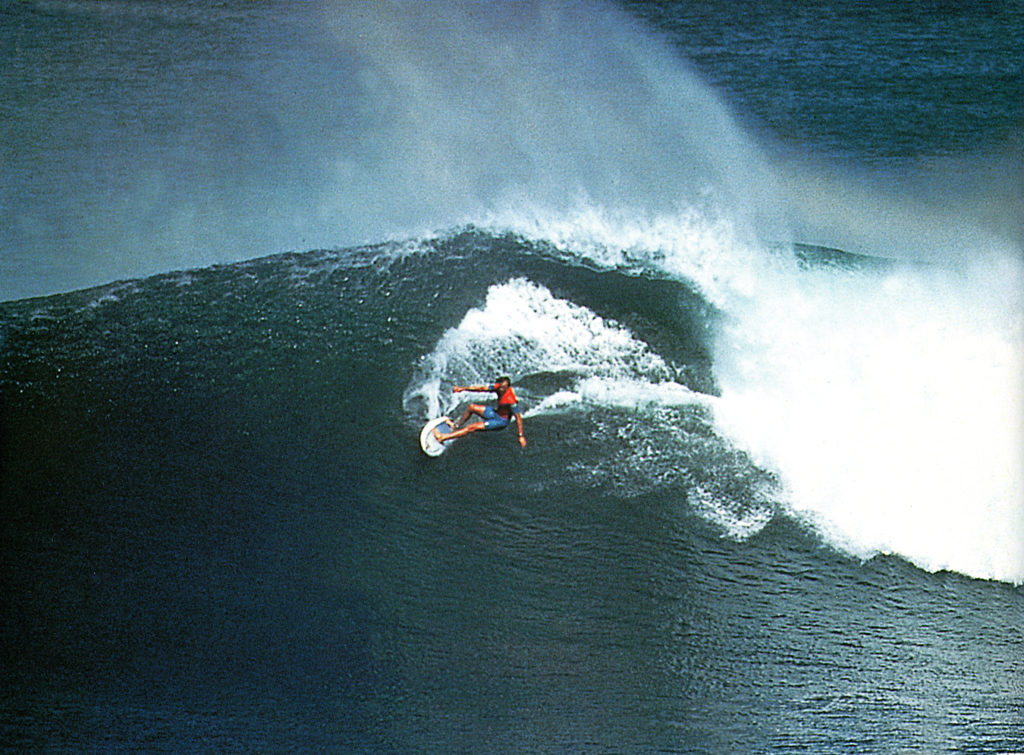
Simon Anderson at Bells Beach, as featured on the cover of Wavelength issue 2. Photo Peter Simons
1981 was not only a seminal year for British surfing, with the launch of the nation’s first-ever world tour event in Newquay, but also one for the wave-riding world at large. In April, Aussie Simon Anderson unveiled his brand new three-fin Thruster, riding it to a convincing victory at solid Bells Beach, setting the wheels in motion for the biggest sea change in surfboard design since the shortboard revolution.
In issue one of Wavelength, released just a few months after the Bells event, legendary St Agnes based shaper Peter ‘Chops’ Lascelles offered his take on the birth of the design gleaned during a recent jaunt in his Australian homeland.
“Well it goes like this,” reads the article, “Big Simon Anderson just could not get it together with a twin fin. So after sitting down wafling his way through a couple of dozen tinnies so to speak, he came up with this three fin thruster idea and a six foot hangover. And off to the Energy factory he did stroll to put it into practice and thus create one of the most unique designs in modern day surfing.”
“As it happens I was in Sydney at the time cruising around the factories,” he continues “and I came upon this idea and believe me it hit me like walking into a brick wall after five pints of Stella, swift and sudden but I was really into this one.”
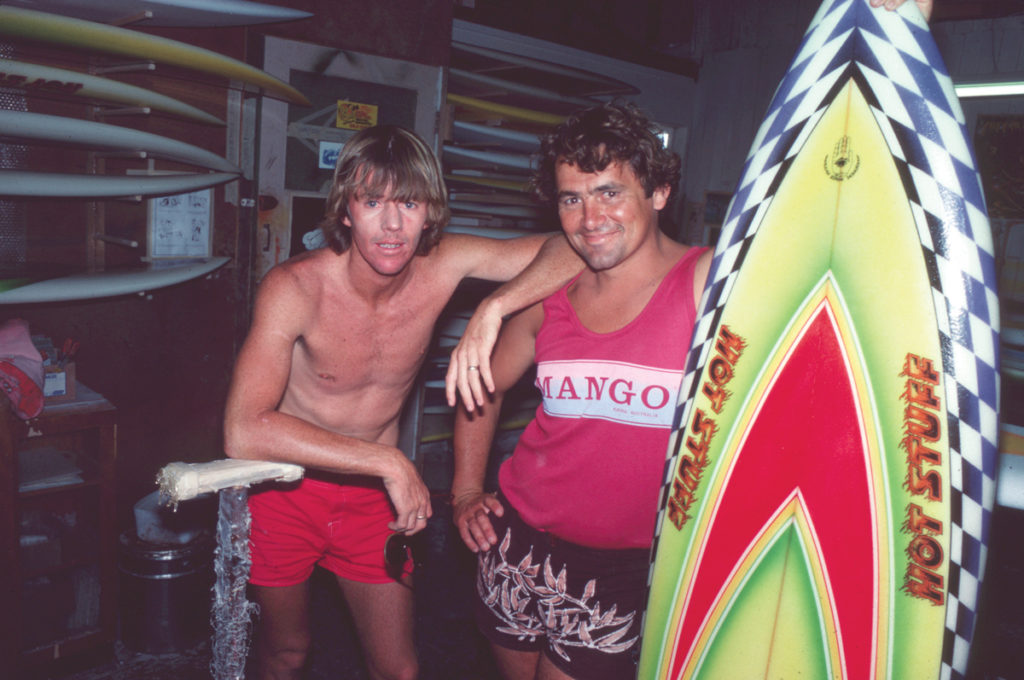
Rabbit and Chops at the Hot Stuff factory on the Gold Coast. Photo John Conway / WL Archive
Legend has it, Chops first ever go on a thruster was in perfect 6-8 foot cyclone pits at Noosa in early ‘81. “How can I explain it? It was love at first sight,” he writes, before going on to describe how, like Simon himself, he had attempted to sell various people on the design in the months leading up to the Bells event, but had received short shrift until Anderson’s victorious demo. By the time Simon silenced any remaining doubters with another win at the Coke Surfabout in Sydney a month later, Chops was already back in the UK, whipping up his own version of the new design. First, alongside Tad Ciastula at Vitamin Sea and later for his own Beachbeat Surfboards, which his son Markie continues to operate out of St Agnes.
“Tri fins are a real and definite advancement to contemporary surfboard design,” the article concludes decisively. “As they become more popular, which I am sure they will do, only then will we be able to discover the full potential of them as they will be surfed in so many different conditions, from high performance waves to three foot on shore slop.”
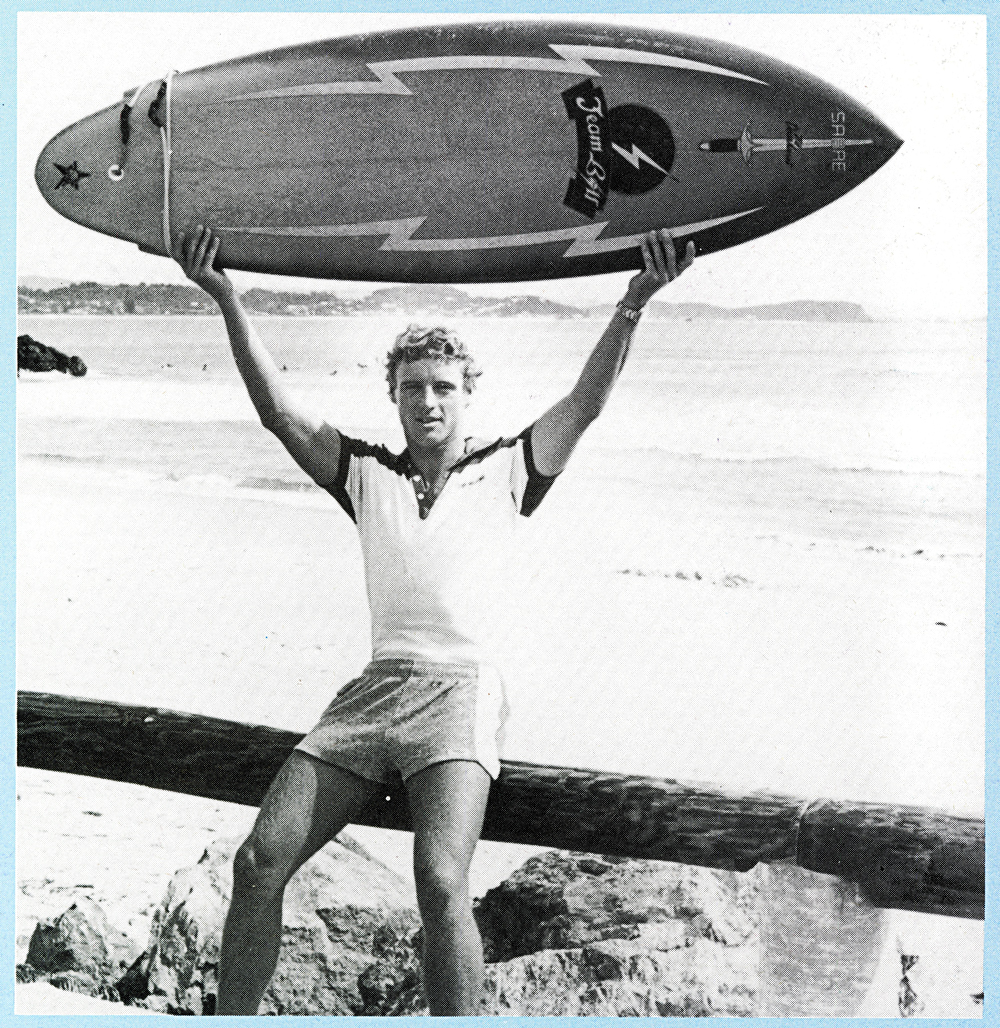
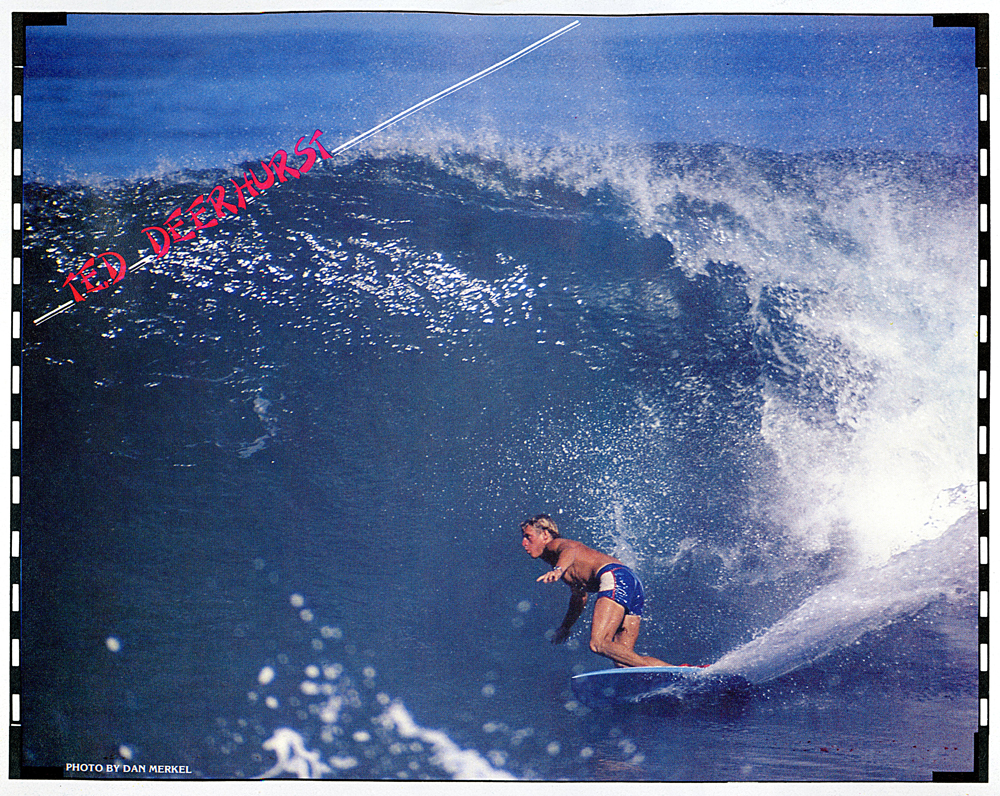
(1) Ted Deerhurst with one of his ‘Excalibur’ surfboards. Photo John Conway. (2) Off the bottom on the North Shore. Photo Dan Merkel.
In issue 2, editor John Conway caught up with Britain’s first professional surfer; Ted Deerhurst – known affectionately as Lord Ted (although he was actually a Viscount).
While Conway’s questions pertained strictly to his views on the state of pro-surfing in ‘82, generally Ted received far more attention for his noble heritage, famously appearing on the cover of Surfer Magazine later the same year, posing with boards and hunting hounds on the lawn of his family manor.
Son of the Earl Of Coventry, Ted was born in Britain but whisked off to California by his American mum at the age of five. The young Viscount took to the lifestyle enthusiastically, befriending future Dogtown star Tony Alva with whom he learnt to surf and skate.
At age 15 he was dragged back to England by his father, who was keen to resume his son’s aristocratic initiation. Although based hundreds of miles inland, Ted’s surfing obsession was satiated by regular trips to North Devon and South Wales, often chauffeured by the Earl in his lavish Rolls Royce.
In ‘75, aged 18, Ted moved out to Hawaii, where he took up residence with Alva and began entering every professional event he could. Just three years later he knocked out Cheyne Horan at 12-foot Sunset, making it into the semis of the 1978 Jose Cuervo Classic. Sadly, despite many more years doggedly following the pro-tour around the globe, it was a result he’d never again match and by the late ‘80s, Ted had faded into obscurity.
He wouldn’t hit headlines again until 1997, when reports of his untimely death were sent down the news wire from Hawaii. At first, no one seemed to really know what happened to the still-young Viscount. Some thought he’d drowned on a giant day at Sunset. Others heard he’d overdosed in a hotel room. There was even a story that Ted had been a spy for the British government and had been bumped off when his cover was blown. The police report settled on a less glamorous conclusion, citing an epileptic seizure suffered in the bath of his North Shore apartment as the cause of death. And for two decades, it was considered case closed.
However, in an excellent biography entitled Surf, Sweat and Tears released last year, author and close friend Andy Martin uncovers compelling evidence that Ted may have in fact been murdered by local heavies after falling in love with the wrong woman. (You can find out more about the book here.)
While he is most widely remembered as a historical curiosity; an amusing caricature of a surfing aristocrat, to observe the way subsequent generations of British pros have mimicked his unwavering tenacity, often in the face of universal doubt, would suggest that his true legacy is a little more heroic.
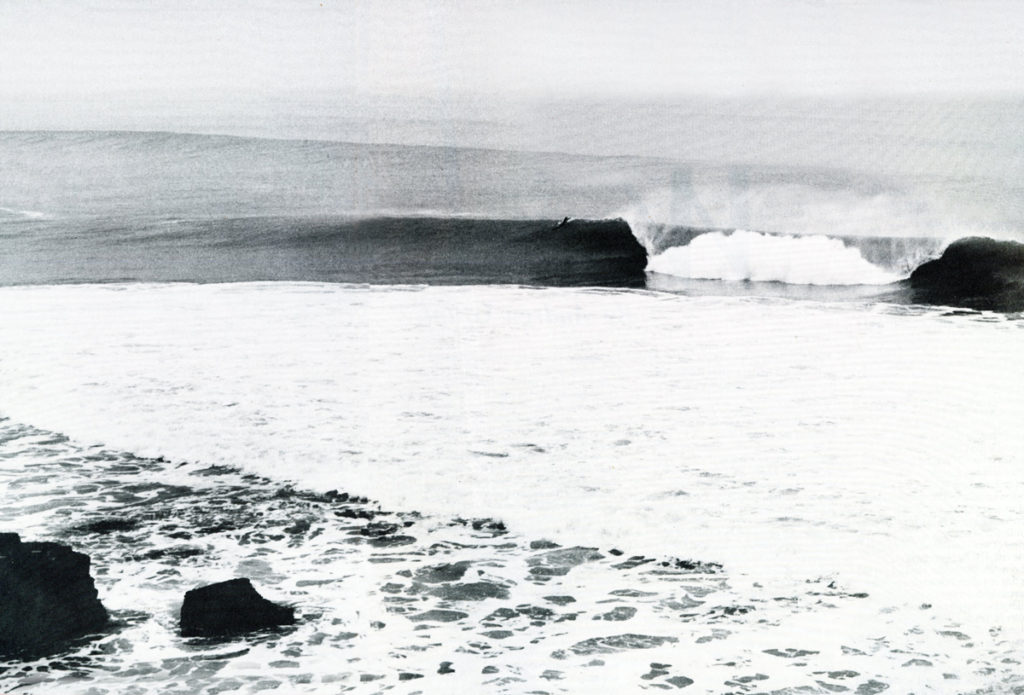
Nigel Semmens looking into the belly of the beast at Porthleven. Photo John Conway
For a photo splash in issue 8, John Conway ventured south to capture a session at Cornwall’s premier stretch of reef.
In the days before online forecasts, Teletext or eyeball phone reports, near-empty six-foot days at Porthleven were not at all uncommon. However, there was a dedicated crew from across the county who developed a shrewd set of tactics to ensure they were always there for those classic days.
Porthtowan based Levvy standout Steve England for example learnt exactly what the lineup outside his window had to look like – and even what sound the right wind made as it whistled through his rafters – for Leven to be firing. In fact, he so rarely missed a good day, he was able to convince a group of groms he had a special weather vane attached to the foot of his bed that rung a bell on the mornings the conditions were just right. (He didn’t).
Some of the younger surfers employed a less refined and a little more hopeful approach, regularly calling up the harbour master for an eye-ball report (which he usually declined to provide). Others would dial the old red phone box on the cliff overlooking the break over and over, hoping a passerby would pop in to answer with a breakdown of the conditions.
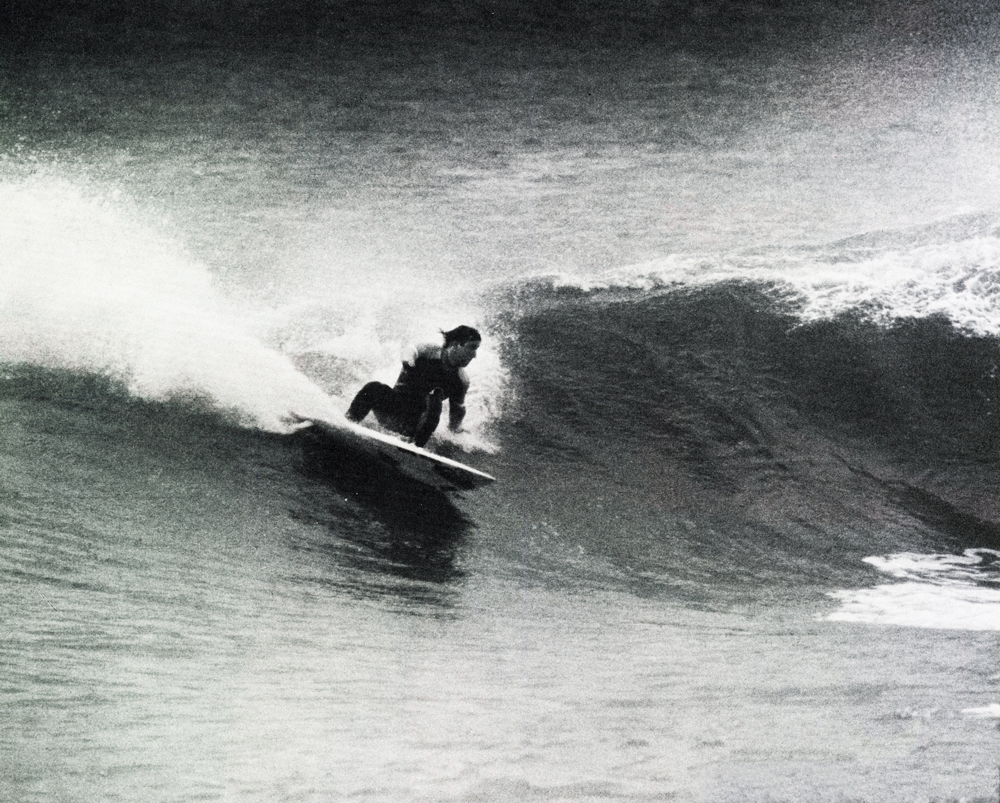
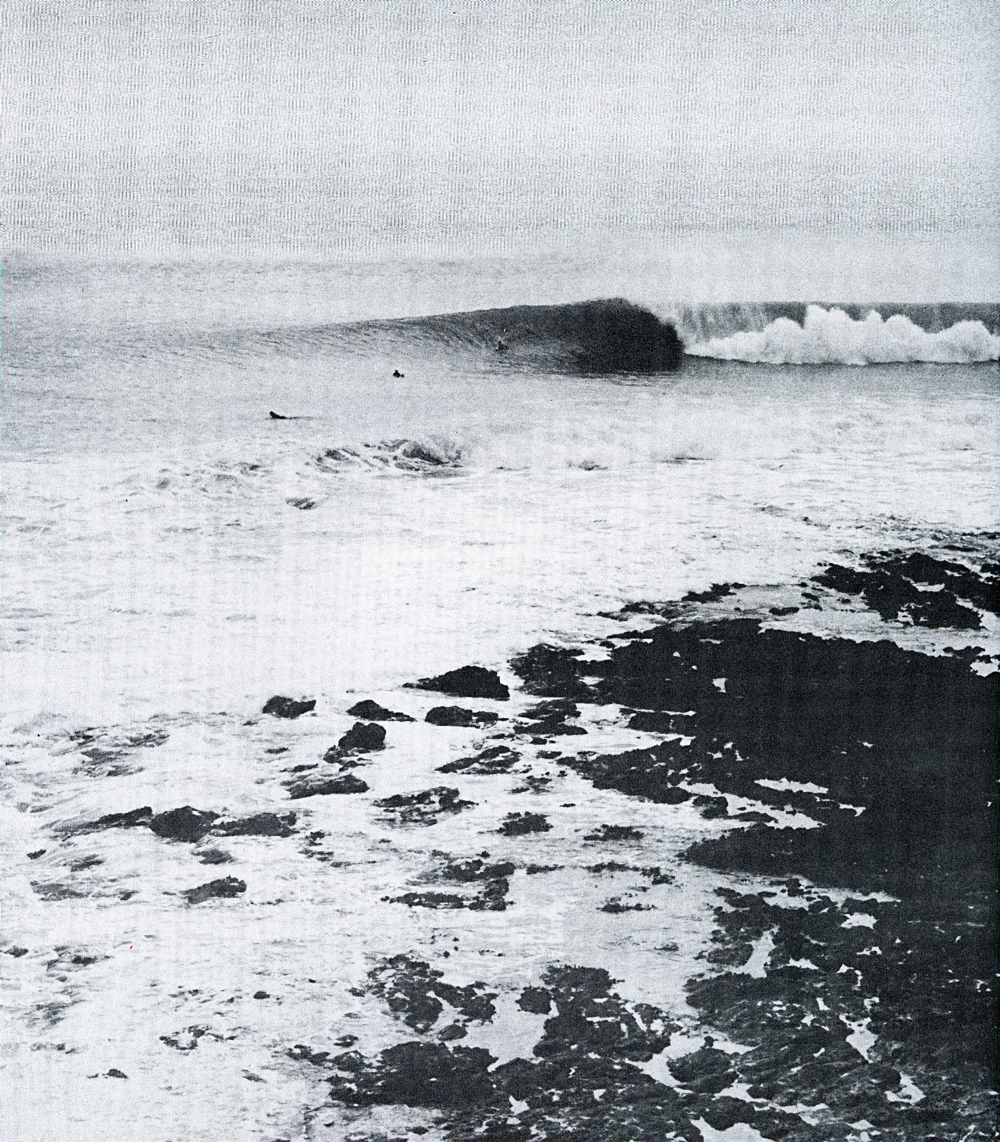
(1) Nigel Semmens laying it on rail. (2) A perfect Levvy cylinder unloads for a crowd of three. Photos John Conway
The luckiest non-locals had their own dedicated informants on the ground, who put the call out whenever the wave began to break. Like on the day pictured here in ‘85, when, according to the article, an unnamed spectator called up Smile Surf Shop in Newquay to say “Leven’s off its face, send in the cavalry!”
Three hardy surfers from the Ocean Magic factory – Nigel Semmens, Nigel Woodcock and Phil Northey – downed tools and answered the battle cry, whipping down there for a freezing, but otherwise all-time session.
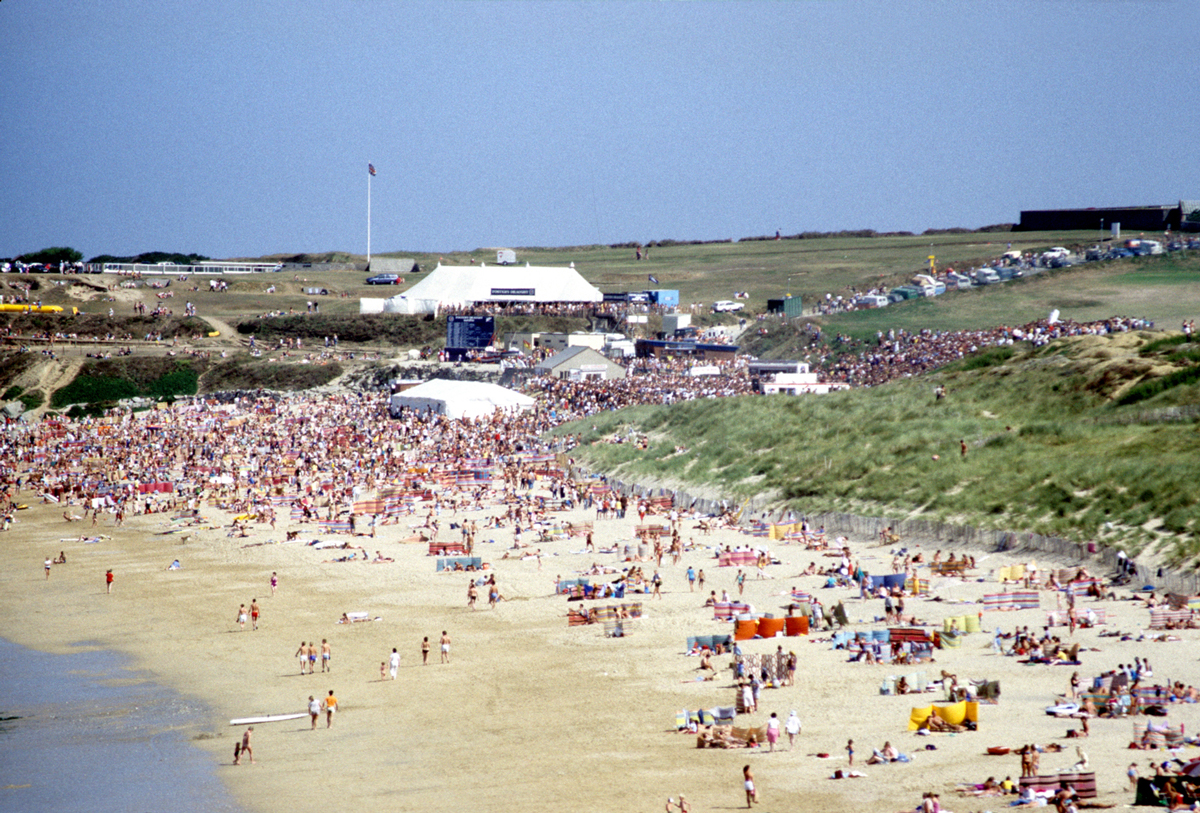
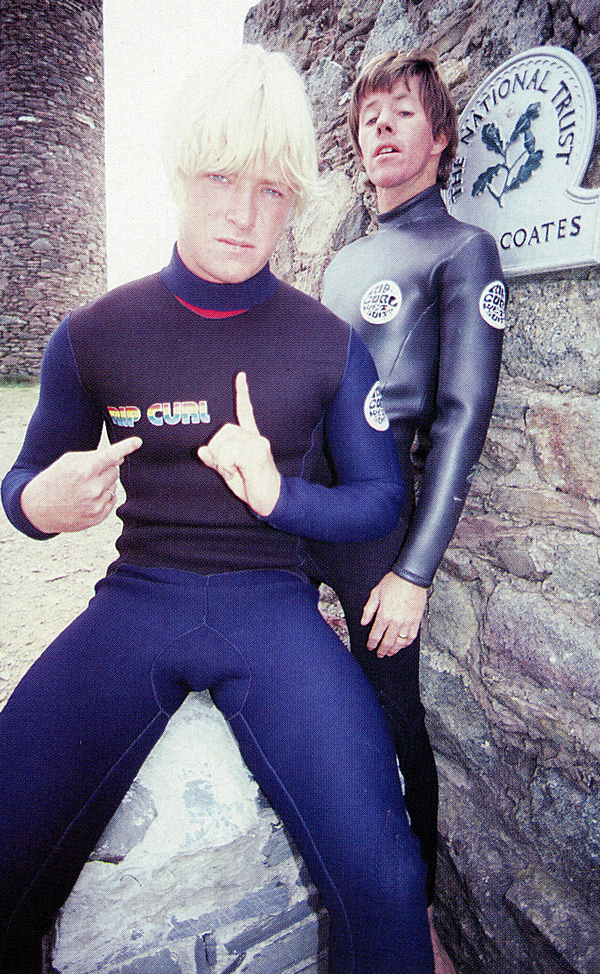
(1) The Fosters event routinely drew crowds of thousands to Fistral throughout the 80s. (2) Cheyne Horan and Rabbit pose for a Ripcurl wetsuits shoot at Wheal Coates, a former tin mine near St Agnes. Photos John Conway
During the early years of Wavelength, most column inches were dedicated to competitive surfing, with no event more widely heralded or better covered than Fistral’s annual world tour stop. Throughout its various iterations, the comp welcomed the biggest stars of the day including Matin Potter, Shaun Tompson, Rabbit, Tom Carroll, Tom Curren and many more.
Ask any local surfer who was there at the time and they’ll tell you it’s hard to overstate the significance of the events. To have your surfing heroes, previously only glimpsed in crumpled magazines or in movies projected on the wall of the town hall, suddenly appear at your local was an otherworldly experience in the early 80s. What made it even better was that you could go over and speak to them, examine their futuristic-looking craft and even paddle out during a free surf to ogle from the shoulder as they flew past at speeds never thought possible.
And, once the sun set, you could send it with them too. You see, the mid-80s was a strange time in pro-surfing. While many media outlets – including Wavelength – were dead set on portraying it as a clean and athletic pursuit, with a view to legitimising the sport in the eyes of the wider public, most of the blokes on tour were still as loose as they come. None fit the surf-hard, party-harder mould more so than Aussie Gary ‘Kong’ Elkerton.
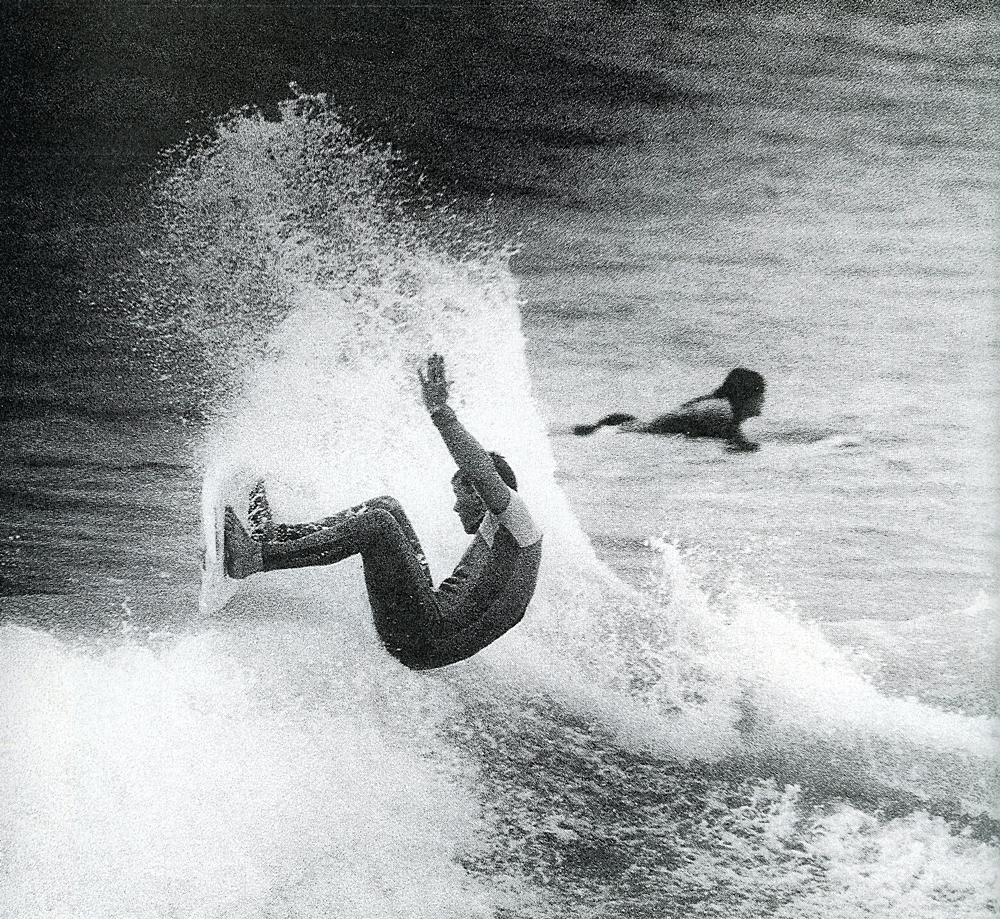
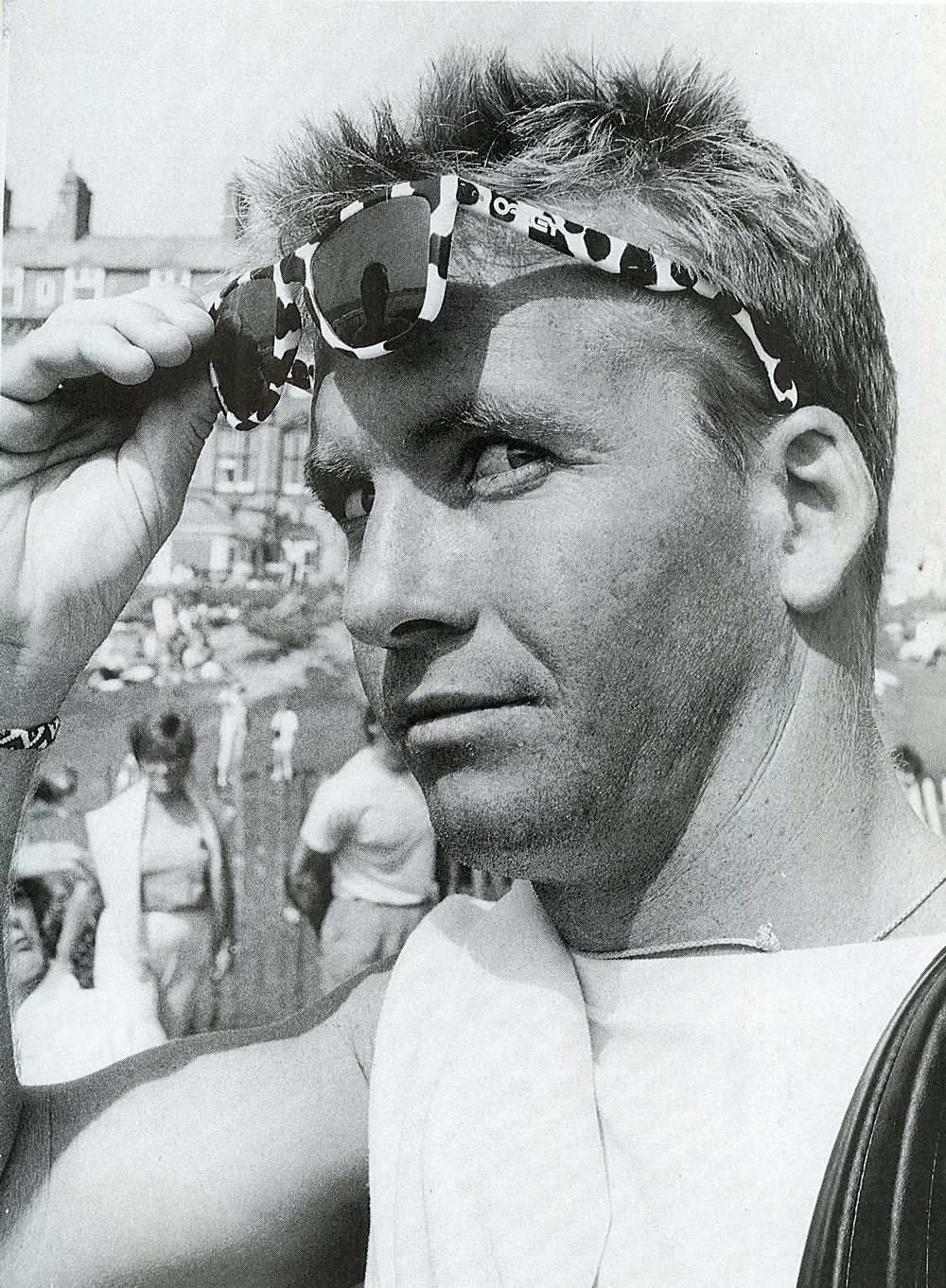
(1) Kong blows the tail. (2) Spotted on the beach, hiding out behind a pair of classic Oakley Frog Skins. Photos John Conway
So, when during the Fistral Fosters event in ‘85, a party was organised at the Headland Hotel to celebrate his 21st birthday, it was always going to be a wild affair.
One British surfer remembers how, on the day of the party, he had an interview with a tabloid journalist, sent down from London to see what this pro-surfing lark was all about and, quite liking the look of her, invited her up to join the festivities.
“Everyone who was anyone at the time was there,” says the surfer, speaking to me on the phone three and a half decades on.
It started off quite subdued, but as the night wore on and the drinks flowed, things soon escalated and by the early hours, it was all-out carnage. At some point, people started throwing each other into the pool. Then, when there were no dry revellers left, in went the furniture. And soon almost everything in the room, including a row of huge ornamental plant pots was being launched into the deep end.
Surely it was just the sort of scoop the journalist was looking for. So what was the headline the next day? ‘Surfers run riot and smash up hotel on drink and drug-fuelled binge’?
Well luckily no. According to the surfer, he and the journalist had already long since retired to ‘drink champagne’ in his room by then. “But that’s a whole other story,” he laughs, adding that in the end, she never wrote a thing.
After draining the pool the next morning, the hotel staff reportedly handed out lifetime bans to some of the offending tour surfers and the unfortunate local brand reps who organised the party, who were also left to foot the bill for the damage.
However, thanks to the selfless late-night antics of that brave British competitor, pro surfing’s ‘image’ at least, was saved from the ravages of the gutter press.
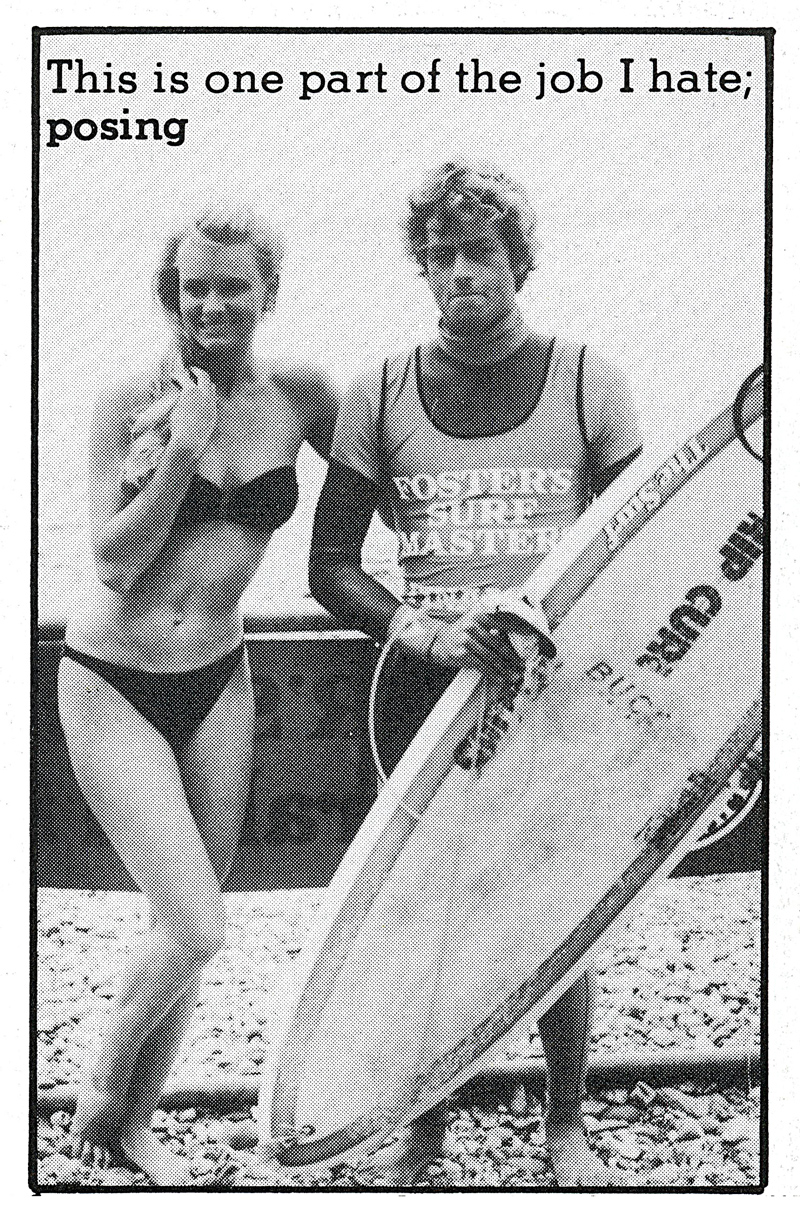
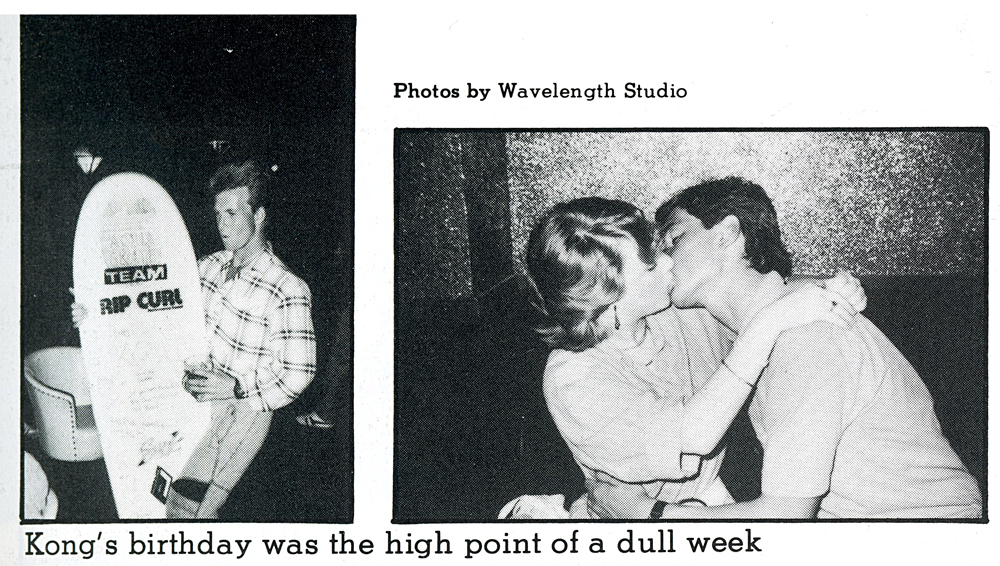
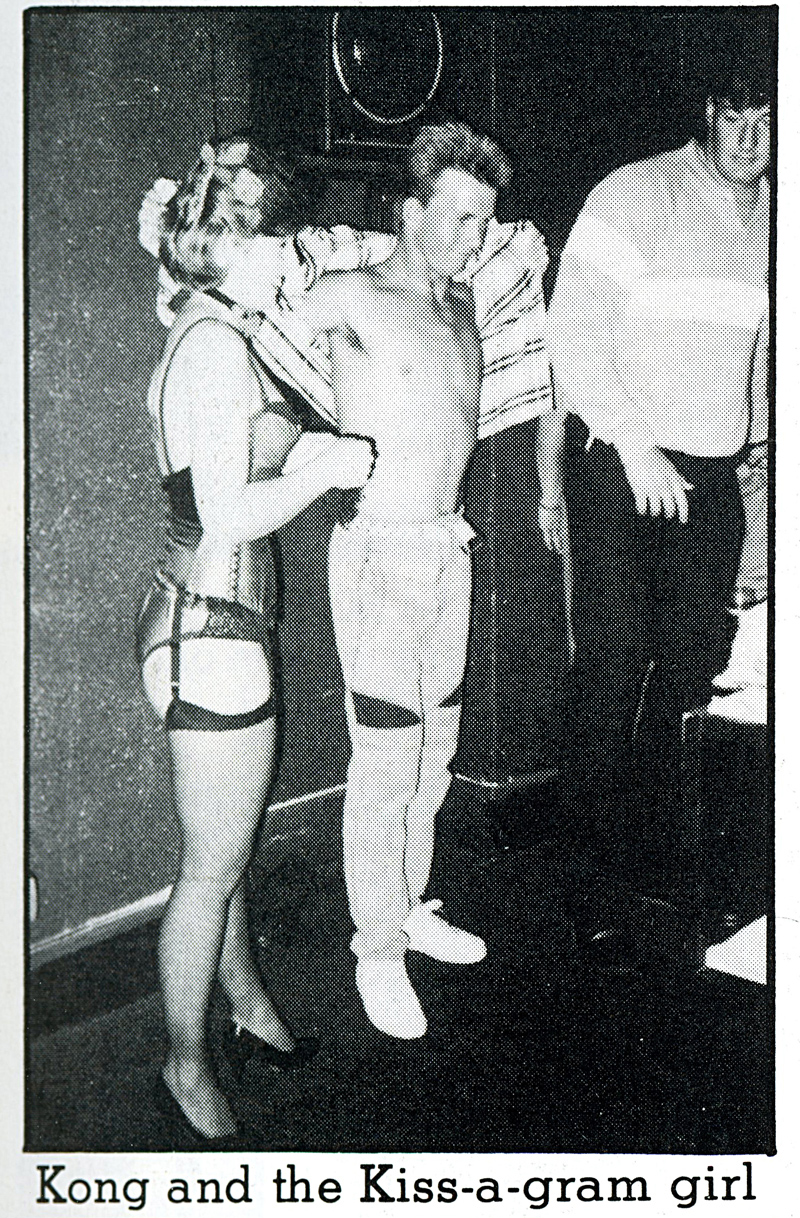
Wavelength’s coverage of the ’85 Fosters Surfmaster. Photos: Wavelength Studio
The year after Kong’s birthday bash Fistral hosted the prestigious World Amateur Championships, at the time, the globe’s largest-ever surfing contest. With eighteen countries, including the likes of Venezuela, Norway and Sweden, and hundreds of competitors in attendance, the whole thing was quite a spectacle.
It kicked off one Sunday with all the national teams and their officials parading through Newquay town centre with flags waving, accompanied by the Lady Mayor and the town band, much to the bemusement of the assembled shoppers.
Among the competitors was a 14-year-old Kelly Slater, who landed his first major championship result at the event. And thus, you could probably make the case that the wobbly onshore lumps of North Fistral provided a critical stepping stone on the GOAT’s gradual march towards total global domination.
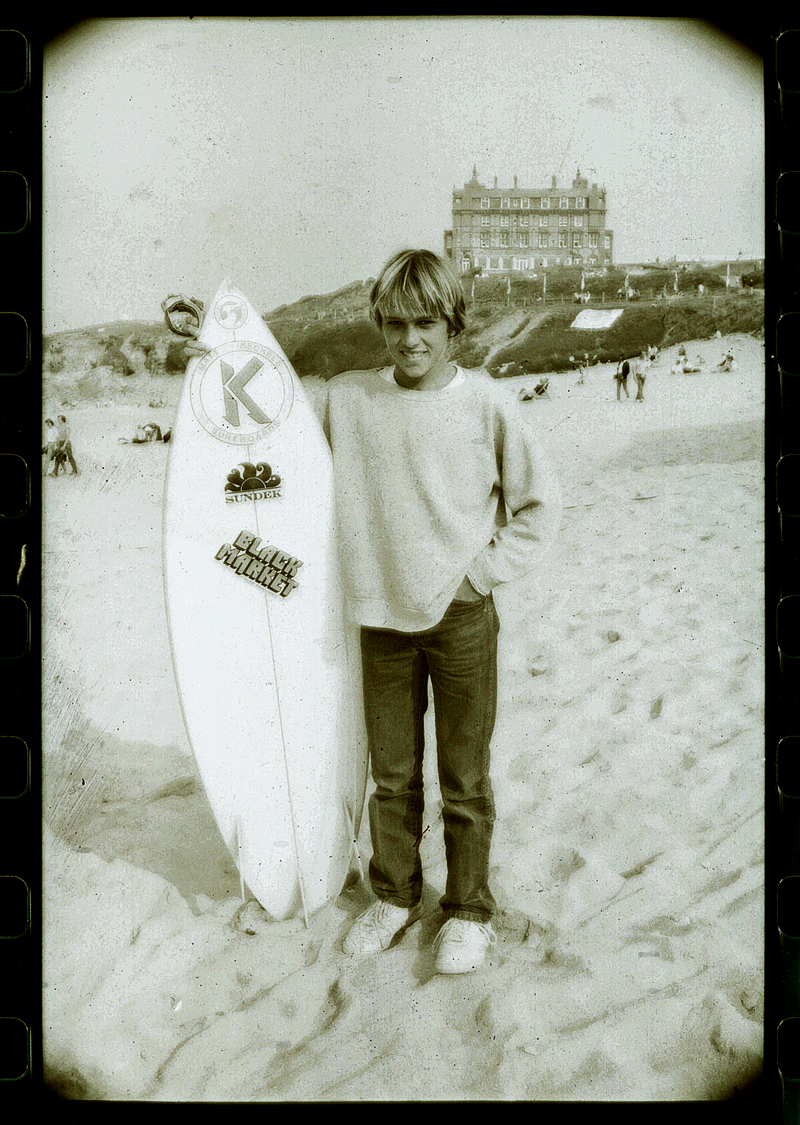
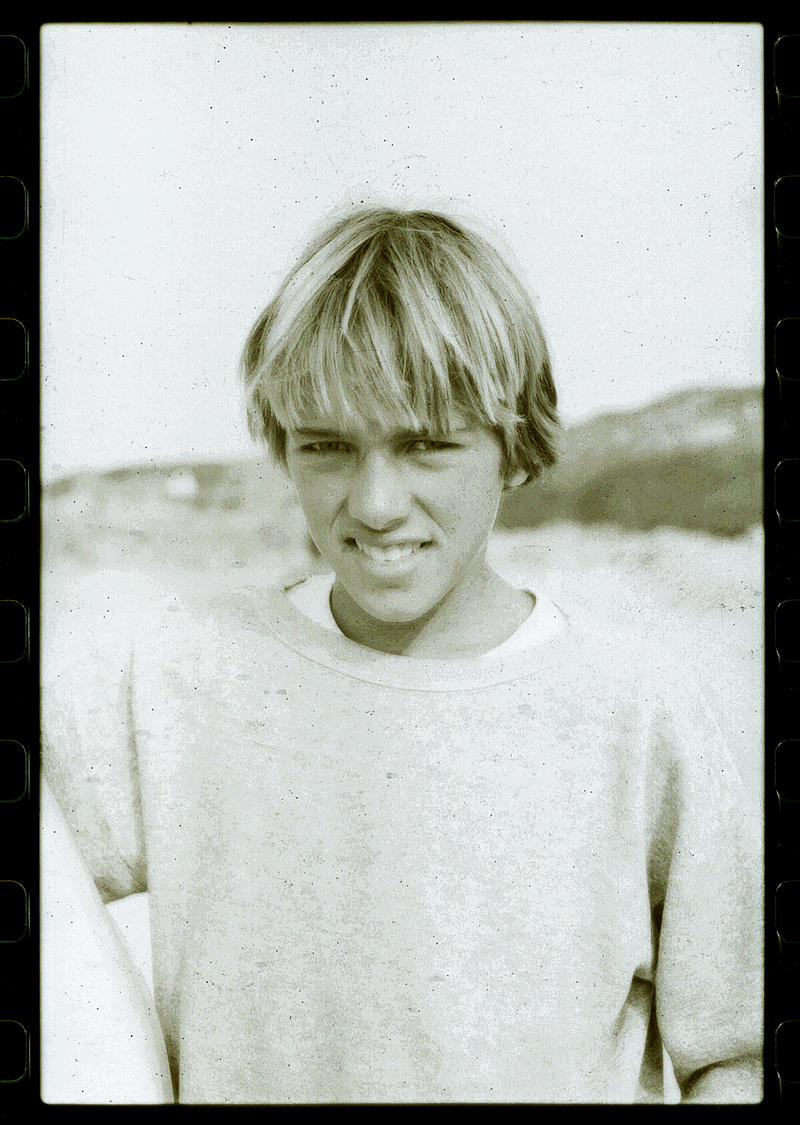
(1 &2) 14-year-old Kelly Slater poses for a portrait at Fistral in ’86. Photos John Conway
Despite the result, it’s fair to say the young Floridian was not particularly enamoured with Newquay, writing on his Instagram many years later that although the waves were slightly better than expected, the food was much worse. His opinion didn’t improve much on his next trip to the town either, with his most enduring memory reportedly being the sight of someone in a nightclub throwing up into a pint and then drinking it again.

